|
Waaay back during the days of the Obama administration there was a show on TLC called 19 Kids and Counting. The show was a reality TV series about the large, charismatic Duggar family. Mother Michelle Duggar and Father Jim Bob Duggar were the parents of 19 adorable kiddos. The girls were beautiful with long curly pre-Raphaelite hair and modest skirts. The boys were fresh-faced youths that epitomized young American manhood. The Duggar family, a strict Christian conservative family, offered the world a vision of the happiness that awaited women who chose to give up feminism. The show, 19 Kids and Counting, was anti-feminist propaganda. Its message was clear: Michelle Duggar and her daughters may have given up the freedoms that most 21st century women enjoyed but look how happy they are! None of the women on the show were anxious or worried or frightened or fearful or stressed about their paths in life. Their paths in life were ALREADY DETERMINED and oh what a relief that was. Each year on the show mom Michelle Duggar would get pregnant and have a baby. For awhile the family was fairly uncontroversial. TLC made sure that the Duggars remained apolitical and not too obnoxiously preachy when it came to their ultra-conservative brand of Christianity. The Duggars started to become controversial in 2010 when Michelle Duggar, at the age of 43, gave birth to Josie Duggar at 6 months gestation. Josie Duggar was severely premature, weighing just 1 pound at birth, and the public were confused as to why a 40-something woman with 18 children was still continuing to get pregnant. When, after giving birth to Josie Duggar, Michelle happily announced that she was pregnant again there was a lot of anger among TV viewers. It seemed like such an irresponsible act. When Michelle Duggar later announced that she had miscarried her pregnancy public sympathy was in rather short supply. Women’s rights advocates began to attack 19 Kids and Counting. Feminists could sense that there was a sort of darkness about the Duggars. Despite the family’s surface sunniness the Duggars’ family philosophy had an underlying harshness. Women following the Duggar rules had to be set on a narrow path in life that involved multiple dangerous pregnancies and complete submission to family patriarchs. But still, the women seemed happy. Right? I mean, is it really that bad to give up some rights in exchange for happiness? Most people are aware of what happened next. In 2015 it came to light that Josh Duggar, the oldest son of Jim Bob and Michelle Duggar, had sexually assaulted several of his sisters. Jim Bob and Michelle had covered up the assaults and Josh Duggar had never faced justice. Later Josh Duggar was sent to prison on child pornography charges. He is currently serving a 12 year sentence. The scandal was, as you can imagine, a massive blow to the anti-feminist movement. The whole point of anti-feminism was that women received a life of happiness and safety in exchange for relinquishing their rights. They got the handsome protective husband and healthy, rosy-cheeked children. And in return the women would not complain or assert herself or occupy anything except a subservient position to the patriarch of the household. If you kept sweet, you stayed happy. THAT was the deal! The message turned out to be false. It doesn’t matter if you are a feminist or an anti-feminist. There is no lifestyle with a magical GUARANTEE of happiness. With feminism, however, women are allowed to have safety nets if they encounter abuse. They do not have to remain at the mercy of whatever the family patriarch decides. The anti-feminist movement pushed back against the Josh Duggar scandal. Come on people, all families have bad apples. Josh was an aberration. OVERALL the Anti-Feminist families yield more happy women than Feminism. Right? Look at the other Duggar women! They’re all happy and smiling. The damage had been done, however. Even without Josh Duggar the Duggar family was full of the same woes as any other family on the planet. Jinger Duggar revealed that this month. Jinger Duggar (her name is pronounced like “ginger,” which surprised me. I always thought her name was like “JING- er” and thought it was a pity that her parents had given her such a stupid name) released a book, Becoming Free Indeed. The title of Jinger’s book is a tongue-in-cheek reference to the website “Free Jinger.” The website was started in the early 20-teens after several 19 Kids and Counting viewers noticed that Jinger seemed to be a little more rebellious than the other Duggar daughters. Duggar critics were thrilled whenever they caught young Jinger roll her eyes at her parents’ words or declare she liked cities over the country. People became hopeful that Jinger would be the first child to completely break away from the Duggar cult. By the way, please check out Fundie Fridays’ excellent video on Jinger Duggar here. In Becoming Free Indeed Jinger has nothing but kind words for her parents. She remains a conservative Christian and her book is free of any of the satisfying “tea” that most Duggar haters were anticipating. That being said Jinger also strongly condemns the brand of Christianity that she had been raised in. The Duggars followed Bill Gothard, the head of a fundamentalist Christian movement called the “Institute in Basic Life Principles” or IBLP. Gothard was forced to resign from IBLP in 2014- one year before the Josh Duggar allegations were revealed- after it was revealed that Gothard had sexually abused at least 34 women (some only teens at the time) who worked for him. Gothard had a lot of sexual peccadilloes that he forced on women as requirements for entry into heaven while Gothard ran IBLP. All godly women, according to Gothard, needed to have long curly hair, maxi skirts and dresses. This “little girl” look was how the Duggar women were also required to dress. Frankly even back in 2012 I thought there was something fetish-y with the Duggar daughters’ style of dress. It did not seem quite the same as the “modest” style of dress that more conservative Jewish, Muslim and Christian women commonly wear in society. The Bill Gothard/ Duggar style of female clothing was designed for the heterosexual male gaze while cosplaying as “modest.” The insistence on the long curly hair gives it away. In Becoming Free Indeed Jinger Duggar talked about the mental health problems that ruled her childhood. Jinger Duggar suffered from eating disorders and severe anxiety that made her sob with fear over even meeting friends for lunch. “What I grew up in was very fear-based,” Jinger Duggar said in a recent interview, “Based on superstition, manipulation (and) control.”
“I was promised that if I followed these teachings from Bill Gothard- this man- that my life would be a success…. but if I didn’t follow every principle maybe God’s gonna kill me in an accident.” Jinger Duggar talked about the internal agonies she went through for the “sin” of wearing “a borderline kneeling skirt that would come above my knee when sitting.” Jinger Duggar also revealed that she had an eating disorder due to an obsession with being “perfectly thin.” It’s almost like complete female submission to a patriarch does NOT solve the anxieties and unhappiness women face in society. It’s almost like there is no magical cure-all. The best you can do is help women by giving them safety nets when life goes sideways. That is feminism. Anti-feminism is pretending that life NEVER goes sideways. Jinger Duggar has broken away from Bill Gothard’s church and is talking about the abuses that the Duggar brand of conservative Christianity brought to women. She is frustrating Christian fundamentalists across the nation. Jinger Duggar, however, is still very much a conservative and still follows a Calvinist Christian church, frustrating Feminist Duggar critics. Jinger Duggar is not conforming to ANYONE’S notion of who she should be. And that, my friends, is becoming free indeed.
0 Comments
TW: This article will be discussing anti-Semitic imagery. Okay, let’s be frank. The trans rights movement has had a rough month. First Minister of Scotland Nicola Sturgeon’s polls plummeted after Sturgeon pushed through her historically unpopular Gender ID bill. Sturgeon also defended an AMAB trans person being placed in a woman’s prison despite this AMAB trans person having violently raped several women. The reaction by the public wasn’t pretty. Then India Willoughby, a prominent trans activist and TV personality in the UK, waved her white Karen flag high when Willoughby compared being asked questions on TV to being lynched. Sure Jan. A wealthy white British woman being interviewed about trans people in women’s prisons is EXACTLY THE SAME as the historical trauma black Americans suffered for centuries at the hands of lynch mobs. That’s not appropriative at all. No sirree! Ugh Oh, plus the Harry Potter game Hogwarts Legacy has already broken records for pre-release sales on Steam despite a loud online boycott by trans activists. JK Rowling has been busy doing evil things like opening rape shelters and helping refugees escape Afghanistan while prominent trans rights activists have been… um… posting Hogwarts Legacy “spoilers” on social media? I mean, how can you post a “spoiler” for a game? Isn’t the whole point of the game not the story but the world-immersion aspect? People only want to enjoy the top-notch visuals and character interactions and puzzles. Who cares about “spoilers?” Try harder. I mean, the Black Panthers civil rights movement served free breakfast to low-income children in an effort to make inroads for their cause back in the 60s. Maybe trans activists could do something like that instead of continually posting on Twitter about who cursed Anne? Just saying. Trans activists are a bit on the ropes at the moment so they have now started a new tactic: insisting that JK Rowling is anti-Semitic! Not only is JK Rowling transphobic (she’s not, btw, but let’s leave that to the side for the moment) but she’s HATES JEWS! How is JK Rowling anti-Semitic you ask? I can understand the confusion there. The whole through-plot of the Harry Potter series was about the conflict between Death-Eaters (thinly-disguised Nazis) and “Mudbloods” (wizards born from Muggles, who were seen as “impure” by the villain Voldemort’s followers). It was basically a metaphor about the conflict between the supposedly pure “Aryan” Nazi movement in the 20th century and Jews. JK Rowling has always been pretty explicitly anti-Nazi. But no. A lot of trans activists out there are INSISTING that JK Rowling is anti-Semitic and frankly as a Jewish person whose grandfather survived the Holocaust… it’s starting to piss me off. Please stop using Jewish historical trauma as a rhetorical tool to go after JK Rowling. Please don’t. It’s not great, especially when the arguments being made are in such bad faith. Why is JK Rowling anti-Semitic according to these new critics? It’s because the goblins that run Gringotts bank are (allegedly) anti-Semitic caricatures. So let’s break this down. Are the Gringotts goblins anti-Semitic caricatures? Let’s check out the passage from Harry Potter and the Philosopher’s Stone where the goblins are first introduced. “Gringotts,” said Hagrid. They had reached a snowy white building that towered over the other little shops. Standing beside its burnished bronze doors, wearing a uniform of scarlet and gold, was- “Yeah, that’s a goblin,” said Hagrid quietly as they walked up the white stone steps toward him. The goblin was about a head shorter than Harry. He had a swarthy, clever face, a pointed beard and, Harry noticed, very long fingers and feet. He bowed as they walked inside. So let’s compare Rowling’s description with classic anti-Semitic imagery from Nazi Germany. There is some overlap. The goblins run a bank and anti-Semitic tropes usually show Jews as bankers obsessed with money. The goblin has a pointed beard which is also often seen in anti-Jewish imagery. Other more well-known features involving anti-Semitic caricatures are missing from Rowling’s goblins. The goblin is dressed in a suit of red and gold while anti-Semitic cartoons usually show Jews to be dressed in black. The goblin is “swarthy” while anti-Semitic cartoons usually show Jews as pale and wormy. The goblin has very long fingers and feet, which is not a traditional anti-Semitic physical trait. We don’t get a description of the goblin’s nose or whether the goblin is hunchbacked. Something else that’s noteworthy: JK Rowling’s goblins are very subterranean. The vaults of the bank are deep in caves underground. The goblins travel from vault to vault in miner’s carts that drive themselves. There seems to be a real mining tradition associated with the goblins. Again, Jewish stereotypes are not associated with mining. Do you know what is associated with mining? Ancient Anglo-Saxon and proto-Germanic mythology about tiny bearded men who mined underground. You can call them “dweorg” (Old English), “dvergr” (Old Norse), or “twerg” (Old High German). Or you could call them “dwarves” as JRR Tolkien did. Or goblins, as JK Rowling did. You can’t call them anti-Semitic caricatures, however. The mythology of dwarves in Britain pre-dates the movement of Jewish populations into Western Europe. Now, that being said, while JK Rowling never intended for the goblins to be anti-Semitic caricatures, the makers of the Harry Potter movies are on slightly shakier ground. Unlike the description of the goblins in JK Rowling’s writings, the producers of the movie adaptation of Harry Potter and the Sorcerer’s Stone seem to have given the movie goblins far more anti-Semitic overtones. The goblins in the movie had large pointed noses (something Rowling never wrote in her description), are dressed in black Victorian banker clothes (again something Rowling never described), and are hunchbacked (another description that was never in the book).
Keep in mind that Rowling had no input when it came to character design for the Harry Potter movies. She merely signed over the rights to her work and was not further consulted by Warner Bros. Her only credit in the movie Philosopher’s Stone is as the author of the books the movies are based on. But then again, the producer of the Harry Potter movies was a man, and thus less likely to attract the wrath of penis-possessing people. The fact that none of the (male) costume designers, visual concept artists and producers of the Harry Potter and the Philosopher’s Stone movie have been criticized for their anti-Semitic imagery shows the bad faith in which the accusations of “anti-Semitism” against JK Rowling are made. Because let’s be real. The people criticizing JK Rowling for “anti-Semitism” don’t actually give a damn about us Jews. They’re just throwing anything they can at Rowling and hoping it sticks. And it’s still not working. When the main villain of your movement is busy opening needed rape shelters while the people who represent your cause appear to spend all their energy posting TikToks about what exactly it means to be “tri-gender”… you’re losing. It’s time to stop obsessing about JK Rowling and start solving actual problems affecting the trans community today. Trans people are disproportionately houseless and low income and unemployed. That needs attention. And if you could stop exploiting Jewish historical trauma in your fight, that’d be just great. I remember being obsessed with Disney movies in the 80s. I was exactly at the right age to enjoy the rise of Disney’s second Golden Era of animation. When The Little Mermaid came out in 1989 I insisted that my poor mother take me to see it again and again. My mother, who has always been a feminist, hated the movie. At the time I never understood how The Little Mermaid could have been seen as a movie with a bad message. Yeah, Ariel was only 16 when she got married to Prince Eric at the end but 16-year-olds are basically adults, right? Like, they have boyfriends and drive cars and study books with algebra and sometimes calculus in them! To 7-year-old me, 16 seemed like a perfectly good age to marry a 25-year-old man. And yes, I know that Disney canon has officially retconned Prince Eric’s age to just-turned-18 (the movie starts with the sailors celebrating Eric’s birthday) so that Prince Eric is less than two years older than Ariel. Still, I think Disney just did that to make the scenario less creepy. Prince Eric always seemed like a twenty-something guy to me. The fact that during the birthday scene Eric’s elderly passive-aggressive courtier Grimsby is bemoaning the fact that Eric was not married yet sort of implies that Eric is well past his teen years. (Eric’s actual age is never mentioned in that scene.) It must have been easy during the late 80s to brush off feminist criticism. “Geez, it’s a fairy tale! Stop being such a stick-in-the-mud about kids films!” Still, judging by Disney’s next film Beauty and the Beast, someone at Disney must have been listening to feminists. Beauty and the Beast has a quiet feminism to it that The Little Mermaid lacks. Right off the bat, Belle in Beauty and the Beast is a lot older than the 16-year-old Ariel. We never really get an exact number but the fact that Belle’s father is elderly (“I’m old. I’ve lived my life.”) puts Belle well into adulthood. What struck me the most while rewatching Beauty and the Beast was the villain Gaston. As a bad guy Gaston was REAL! And I mean that in the worst sense of the word. Sorceresses who turn into dragons like Maleficent? Witches with magic mirrors? Those villains were safely fantastical. Rapists in 19th century France who forced themselves on women while the entire village approved? That’s real folks. Rachel Armstrong Kolar and Thomas Kolar, who host the podcast “The Wonderful World of Darklords,” point out that Gaston is far darker than a regular playboy. Gaston clearly has lots of gorgeous women throwing themselves at him but he does not want to enjoy himself with a consenting woman. Gaston wants the woman who does NOT want him. Even pre-adolescent girls knew that there was SOMETHING frighteningly true-to-life in the scene when Gaston forces himself into Belle’s house and proposes to her. Belle is alone with a man who is far stronger than her. That man is clearly sexually aggressive. Belle needs to find a way to get herself to safety without being hurt. It’s all very anxiety-inducing. The message of the scene is clear: Hey girls, it’s okay to not want a boyfriend. It’s NOT okay for others to pressure you into getting a boyfriend. And if any guy tries to force himself on you like Gaston did, that’s a bad thing! It’s a bit of a “Well, duh” message but believe me, for early 90s Disney that was a strong form of feminist validation. And it was important for Beauty and the Beast’s audience, pre-adolescent girls, to hear it. Contrast Gaston’s behavior with the Beast. I was struck while re-watching the relationship between Belle and the Beast by the emotional sophistication Disney managed to pack into the film. It’s easy to see the Beast’s behavior at the beginning of the film as having a traditional masculine toxicity. The Beast imprisons Belle in the castle. He tells her where and where not to go. He’s very closed-off emotionally. He’s socially awkward. He makes cringey small talk while Belle weeps over losing her father. The audience is aware that the Beast’s behavior is driven by self-loathing, fear over remaining a beast forever, and years of loneliness in his castle. Belle, of course, does not know this. She only sees the Beast (understandably) as a danger every bit as likely to hurt her as Gaston. Watching Belle and the Beast’s relationship evolve into a real partnership with mutual compassion is wonderful. In the social media age of “My feelings and ONLY my feelings are valid” it’s nice to watch a children’s movie where both Belle and the Beast are forced to make allowances for one another while building their relationship. One scene I adore is when Belle and the Beast are eating breakfast. Belle is eating porridge with a spoon. The Beast, however, is eating porridge messily with his huge paws. The Beast doesn’t have the manual dexterity to hold a spoon and Belle won’t eat with her hands, so they both compromise and sip the porridge directly from the bowls. It’s a neat and civilized way to eat while being inclusive of the Beast’s limited dexterity. We see the Beast progress from epitomizing masculine toxicity to epitomizing masculine virtue when Belle tells the Beast that she needs to leave the castle. The Beast knows that if she leaves there is a good chance that he will remain a beast forever. Belle may not return, certainly not before the enchanted rose sheds its last petal and dooms the Beast to live out his life in animal form.
The Beast sacrifices himself to give Belle her autonomy. It is an example of masculine virtue. The later fight between Gaston, who whips up a mob against the Beast, and the Beast drives the point home that the REAL beast was Gaston the entire time. When it comes to feminism, I will admit that Beauty and the Beast is no Moana. Still, the quiet strain of feminism that the movie showed to its late-20th century audience of little girls is wholesome. Yes, Belle gets her Prince Charming in the end, but only after the movie makes it clear that Belle marries the Beast as a choice. Belle’s husband is her choice that she made on her own time and in her own way. And after the Beast has learned to respect her freedom. Even my mom agrees. Plus my mom loved the fact that I was old enough to go to the movie theater by myself when Beauty and the Beast was released. I remember when my friend, a mom and a Disney expert, told me that she hated the Disney millennial movie classic Lilo and Stitch. When Lilo and Stitch was released in 2002, the Mouse House was in the red after having suffered several high budget flops like Dinosaur and Brother Bear. Disney needed a hit. Lilo and Stitch was no Lion King money maker but the story about a rambunctious little alien named Stitch who befriended a little Earth girl named Lilo made enough money to save Disney Feature Animation studios. Most millennials have fond memories of Lilo and Stitch. The movie, however, doesn’t hold up that well when rewatched as an adult. Especially if you’re a parent. “I hated Stitch particularly,” my friend said, “He’s supposed to be this adorable puppy figure wrecking the house but the stakes are too high. I couldn’t laugh at any of his antics. I just wanted Nani and Lilo to kill the little thing and then slow-roast him with a nice garlic sesame sauce.” I knew what my friend meant when she said that the “stakes were too high.” No parent watching Lilo and Stitch can fully enjoy the story. Watching Stitch destroy Nani and Lilo’s home as Nani tries desperately to convince the Child Protective Services (CPS) case worker that she is a competent guardian for Lilo is absolutely triggering. Here’s the deal: Lilo and Stitch is a movie about an impoverished mother-figure trying desperately to keep CPS from putting her child in foster care. Technically Nani, the mother-figure in Lilo and Stitch, is actually Lilo’s big sister. Nani and Lilo’s parents are dead and Nani has guardianship, but she also suffers from all the institutional oppression that single moms face in American society. There is no low-cost daycare available, so when Nani has to work as a waitress she brings Lilo with her to sit at one of the back tables. Nani has no car and the necessity of her working means Lilo is alone a lot of the time. Lilo also clearly has a lot of unresolved trauma from the death of her parents. She gets into fights at school. She destroys property, runs away, and openly disobeys Nani to a dangerous extent (Lilo at one point nails the door of the house shut while a pot boils away on the stove.) Nani and Lilo’s situation has drawn the attention of Child Protective Services. And here I have to put my foot down. Come on Disney! Give us evil stepmoms! Give us octopus-tentacle witches! Give us dragons and poisoned apples and princesses locked in towers. But don’t fucking give us Child Protective Services! Seriously! Nothing, and I mean absolutely NOTHING triggers a parent like hearing those three letters: CPS. Every parent, no matter how loving, still lives in fear of CPS. We tremble at the thought of having our kids taken away from us suddenly and with no reason. We bite our nails every time we find out that our child went to school with dirty clothes or when our toddler falls off the couch and screams. Did he bump his head? Does he need to go to the hospital? And will the hospital call CPS? Anyway, in Lilo and Stitch Nani is busy trying to keep her little sister out of the system when Stitch, a maniacal space alien, crash lands on Earth in Hawaii. Lilo loves Stitch, thinking he’s some sort of weird dog, but Stitch destroys Lilo and Nani’s house. He tears the place to shambles right when Nani is trying to convince an imposing case worker called “Cobra” that Lilo has a safe home environment. This is nerve-wracking enough, but the danger is compounded by the fact that both Nani and Lilo are indigenous Hawaiians. The long horrifying history of indigenous children being taken away by the US government and placed in abusive boarding schools (where many indigenous children died) looms in the background.
Back in 2002 the reception towards Lilo and Stitch was generally positive. People were aware that the animation was a bit more low-budget than the glamour we were used to with The Little Mermaid and Aladdin but the movement was nice and fluid and the characters were endearing enough. Viewers also liked how Nani and Lilo were drawn with more realistic body shapes as compared to the 90s wasp-waisted Disney princesses. In the end, however, I agree with my friend. Once Disney introduced the constant looming threat of CPS taking away Lilo, the movie ceased to be fun. At least for parents. And Stitch absolutely should have ended up slow-roasted over a flame whilst dipped in garlic sesame sauce. Look, I know The Crawling Eye is cheesy. I know this film is so dumb that it was literally featured on Mystery Science Theater 3000…. but I don’t care. The Crawling Eye is a good movie. I like The Crawling Eye. The film was made in 1958 but somehow it still possesses that pre-War British black-and-white thriller atmosphere I adore. It’s no The 39 Steps but The Crawling Eye has good plotting, no-nonsense dialogue and a fantastic suspenseful build-up that even now in 2023 can keep your attention glued to the screen. Does the movie have flaws? Yes, of course. The climax, when the audience gets to see the crawling eye, is a bit disappointing. I won’t deny that. The fuzzy close-up of the gooey disgusting eye is passable but the limp string-controlled “tentacles” are ridiculous. They have all the fearful energy of overcooked pasta. I still snicker a bit at the child actress, completely devoid of fear, calmly standing with a supposed “tentacle” around her waist while the adult actor tries to desperately rescue her. The Crawling Eye (aka The Trollenburg Terror in the UK) was made during an era where no audience members were truly fooled by monster effects. Folks don’t know about the pre- Star Wars era of movies where being scared by the monster on the screen required a hefty suspension of disbelief on the part of the viewer. It was a lift-with-your-thighs-not-your-back level suspension of disbelief. Did scary movies exist before computerized special effects? Oh heck yes! Watch M and see if you don’t get scared. But those movies relied on acting and plotting and dialogue and lighting and editing to give chills. If make-believe monsters were involved, they would have little screentime. The Crawling Eye opens up with several climbers huddled together on a cliff face while mountain-climbing in the Alps. Automatically this setting gets my happy adventure endorphins pumping. Yes, it’s dumb to think that you can have a glorious mountain-climbing experience six thousand feet above sea level while wearing only a turtleneck. To the twelve-year-old boys raised on media like The Adventures of Tintin comic books, however, a good woolen sweater is all you need for a climb. Read any boy’s adventure tale where hypothermia is just a passable condition that can be cured with a swig from a hip flask and you’ll know what I mean. The opening shot of The Crawling Eye looks like a regular, rugged, exciting trip. Unfortunately things go wrong for our turtlenecked alpinists. One of the men gets his head torn off by an unseen menace. We then cut to a train whooshing through a tunnel as the opening credits roll. On the train are two beautiful sisters, Anne and Sarah Pilgrim, who are part of a clairvoyance sideshow act. As the train approaches Mount Trollenburg, the mountain where the alpinist lost his head, Anne suddenly gets a creepy urge to get off the train. She becomes agitated and insists that she and her sister stay at the mountain. Anne cannot explain why she has such a sudden urge to visit the mountain but only states repeatedly that they have to go to Trollenburg. Anne’s unnatural and sudden urge to visit the mountain is a well-placed suspenseful setup. The Creeping Eye has excellent plot pacing and knows how to keep the audience engaged. Anne and Sarah get a room at the Hotel Europa, a small inn at the base of Mount Trollenburg. We meet a few more characters, including a scientist from the UN named Alan Brooks. Brooks has also arrived at the Trollenburg mountain at the request of a researcher, who is worried about an odd cloud that has formed around the mountain’s peak. The inn has very few guests because of the mysterious decapitation deaths that have been occurring to alpinists on the Trollenburg. The creepy atmosphere hangs thick around the place. Sarah Pilgrim meets two friendly British mountaineers, Guilhardt and Brett, who are prepping to climb up to a small hut on the Trollenburg. Later that evening at the inn Sarah and Anne give a demonstration of their mind-reading act. Anne has to psychically visualize certain objects Sarah hides behind a screen. Anne first accurately describes a snow globe with a model of a mountain and a hut. Then Anne falls into a trance describing the mountain and the hut and Alan Brooks realizes that Anne is describing the actual hut on the mountain where the two British mountaineers are currently staying. Anne describes one of the mountaineers named Brett leaving the cabin in a trance. It’s a satisfyingly spooky scene in a cheesy horror movie sort of way. A rescue party leaves to climb up the mountain to rescue Guilhardt and Brett. Brett suddenly arrives back at the inn, acting strangely. Brett is shaky and talks about how the inn is too hot. When Anne shows up in the inn’s lounge where Brett is having a drink, Brett tries to kill her. Another man rescues Anne and punches Brett unconscious. Brett falls to the floor, splitting open his scalp in the process. Sarah then notices that Brett isn’t bleeding from his wound. His body apparently has no blood. I can’t explain why, but that image of Brett’s open, wide, bloodless wound is one of the creepiest shots in cinematic history. It just hits a very scary nerve with me. Later it’s found out that Brett has been dead for awhile. The crawling eye creature killed Brett, reanimated him and sent him back to the inn to kill Anne. The crawling eye didn’t like how Anne’s clairvoyance was giving away the crawling eye’s actions.
There’s a bunch more stuff that is admittedly less interesting for me. Like most cheesy horror movies, the action gets dull once the delicious build-up ends and we’re left with actually fighting the stupid rubber puppet. But you know what, go ahead and roast me because I like The Crawling Eye. I love the mountain setting. I love the idea of a Swiss inn tucked away at the foot of a haunted crag. I find the characters- especially the Pilgrim sisters- surprisingly likeable. I absolutely adore the exciting, suspenseful slow-burn set up of the film. I have no problem late at night popping in my DVD of The Crawling Eye and watching it as visual comfort food. Because, like I said before, The Crawling Eye is a good movie. I remember the first time I watched Star Wars. I was a kid in the 80s. My family was watching a VHS copy of Star Wars: A New Hope. We saw the white armor-plated Imperial Stormtroopers board a Rebel vessel. We heard C3PO fret about “the princess.” Then we saw Princess Leia load a disc onto the R2D2 droid. I was brought up on old school Disney movies and first generation Mario Bros games. I knew what princesses did. They wore pretty dresses, got captured, fainted and had to rely on being beautiful enough for the male heroes to consider them worth rescuing. It was a simple formula. When I first saw Princess Leia, I was not very impressed. Yeah, she had the flowy white gown on but it was very underwhelming. Leia was just wearing a white turtleneck with some sheets draped over it. It looked slapped-together. (By the way, what was it about sci-fi movies in the 70s always putting their main characters in turtlenecks? Did people during the Carter years really think turtlenecks were the future?) Anyway, back to Princess Leia I was young and my first impression of Leia was very “meh.” I didn’t like Princess Leia’s hair. The two iconic buns tied around her ears did not please me. Everyone knew that princesses needed long flowing blond hair, not something that looked like a pilot’s helmet with headphones. Princess Leia’s expressions also threw me. She never seemed scared. She wasn’t pleading or seductive or kind. Princess Leia didn’t traipse through nature singing songs to her woodland friends. Princess Leia looked grim. She looked like my second grade teacher when I had forgotten to do my math homework. By my Disneyfied elementary school definition of “princess,” however, Princess Leia did have some “princess” qualities in her during that first scene in A New Hope. When the Stormtroopers confronted Leia, she immediately ran and hid. It was a very expected princess maneuver. And then, and I’ll never forget this shot, we saw Princess Leia again. She had not fainted. She had not screamed for help. Instead, we saw Princess Leia lean back into the frame with a studied expression, staring at the Stormtroopers. And Princess Leia was holding a gun. I know this sounds weird, but this shot of Princess Leia with a gun preparing to ambush Stormtroopers who had just surprised her completely blew my pre-adolescent mind.
I didn’t know women could FIGHT BACK! I didn’t know that someone who was a friggin’ PRINCESS could do things like ambush enemy soldiers in a fake-retreat-rearguard-attack maneuver. Like, wait, what? Now granted, Princess Leia’s ambush attack didn’t get her very far. She shot the Stormtroopers, missed, ran again and this time was hit by a Stormtrooper blaster. Still, that iconic shot of Princess Leia quietly leaning into the frame while holding a gun peaked a lot of girls into feminism. The idea that women didn’t have to run away but could stay and fight was a welcome inversion of the feminine paradigm. I wouldn’t consider Star Wars to be a feminist movie. That galaxy long, long ago and far, far away seemed to be populated only by men and Princess Leia. Star Wars does not pass the Bechdel Test by any stretch of the imagination. That being said Princess Leia with that gun in A New Hope is an icon. Seeing a woman possess a stereotypically lacey title like “Princess” while being a rebel leader, military strategist, soldier and assassin broke a lot of female character norms at the time. And, needless to say, I like her hair now! We all have traumatic memories of scary childhood movies. There are a lot of movies that absolutely terrify us as children but simply come off as laughable when we rewatch them as adults. (I’ve reviewed The Crawling Eye here earlier). There are some kids movies, however, that still scare you even AFTER you’ve grown. I’m an adult. I’m powerful. I can do what I want. But what I absolutely CAN’T do is rewatch these scenes from my childhood movies and not still be scared. Let’s list them, shall we? 5. “She can’t hear you.” If you haven’t watched The Witches then you were deprived during your childhood. Sorry, but that’s just facts. I can’t say enough good things about the 1990 movie The Witches. It had Angelica Huston as the High Witch ffs! It has Rowan Atkinson! It has the criminally-overlooked Mai Zetterling playing the young boy protagonist’s ex-witch hunter grandmother. The Witches is a horror comedy based on a Roald Dahl book. It is beloved by all millennials everywhere. And every child who has watched The Witches remembers *that* witch. It’s the witch played by Anne Lambton. The scene with *that* witch starts out with Hugo, the young boy main character, playing up in his tree house. He looks down and sees an elegant woman trying to coerce him from the tree. Hugo sees by her eyes that she’s a witch. He clings to the branches in fear as she tempts him with gifts. It’s really scary. Maybe it’s Lambton’s wide-set eyes or the creepy way she talks to a snake she just happened to have in her purse (yes, a snake). Or maybe it’s the way she says to Hugo “She can’t hear you” when Hugo calls out to his grandmother. Either way, Lambton utterly nailed her performance. That scene from The Witches still creeps me out. Jim Henson’s Grand High Witch puppet hasn’t aged well but Lambton’s wide snake-like eyes and the quiet way she tells Hugo “She can’t hear you” is scary. Period. 4. “I…. I…. am still Emperor!” The Dark Crystal just weirds me out as a whole. The puppetry, designed by Jim Henson, is a wonderous example of what pre-CGI practical effects can do. I can’t deny that. However The Dark Crytal just doesn’t really sit right with me. Hard to explain why. Maybe it’s that scene at the beginning where the Skeksis Emperor dies. The Skeksis puppets were clearly modeled after vultures (a MUCH maligned bird, I must say) and everyone remembers the scene where the grotesque beasts crowd around their hateful dying Emperor. The brittle old turkey tries desperately to hang onto his last breath. “I’m … I’m … I’m still Emperor!” he rattles, grasping his sceptre weakly. The Emperor dies, and none of his family cares. They’re full of hate and cunning, no grief. But the Emperor had been hateful too. His dusty corpse disintegrates almost immediately because apparently lack of love in life speeds up the decomposition process. It makes sense in an odd way. The scene creeped me out as a kid and it’s still creepy watching it as an adult. 3. “Oh why did we leave her alone?!” I was really really scared as a kid of the scene in the Disney animated Sleeping Beauty where Maleficent hypnotizes Aurora. The music is spooky. In fact, the song was so haunting that I was disappointed to learn that Tchaikovsky (who had composed the original score for his “Sleeping Beauty” ballet) had meant the Hypnosis Score to go to a silly cat dance. There is no damn way that haunting music evokes silly cats. It’s so bizarre. Even after I saw the ballet I was like…. “Nah.” Sorry Tchaikovsky, but that eerie minor key score is meant for evil. Not kittens. The whole scene is frightening. We see the room where Aurora is alone, weeping, and then the lights go out. We see the fire suddenly condense into a spinning green orb. We see a ghostly shape of Maleficent. Her yellow eyes stare out from the fireplace and then disappear. I couldn’t watch that part as a kid, it was too scary. Another scary aspect of that scene, and I think this was unintentional on Disney’s part, was how Aurora suddenly appeared two-dimensional while walking towards the tower. The shadow was drawn on Aurora in such a way that it appeared that she was like a cardboard figure, not a flesh-and-blood human. Again, I don’t think the animaters drew Aurora like this on purpose. It was just a sort of awkward shadow effect. But it scared me as a kid. Does hypnosis suddenly turn you into cardboard? Do you stop being a human if you’re hypnotized? Either way, even if you’re an adult while you watch that scene, you’re gonna get creeped out. 2. “Oh here’s a treasure! You’ll want that won’t you my dear?! Yes!” And back we go to Jim Henson for the cinematic childhood trauma! Man, the guy really did a number on us millennials. We all know the scene of Sarah and the Junk Lady in Labyrinth. The whole scene is upsetting from start to finish. The scene starts where Sarah, just wanting to escape her scary adventure but knowing she has to rescue her baby brother, begins to gaslight herself that the whole awful experience is just a dream. Her brother is safe. Her parents are home. She’s fine. Denial is a very recognizable psychiatric defense against trauma. Hell, it’s the first stage of grief in Kubler-Ross’s Five Stages of Grief. Then Sarah opens the door of her familiar, homey bedroom and is greeted by a horrifying hellscape. A deformed old woman weighed down with junk barges in and admires all the beautiful toys Sarah has in her room. It’s like a scene out of the TLC show Hoarders. The old junk lady start piling junk on Sarah, telling her how all her beautiful things are so much more precious than her baby brother. It’s all very creepy and sad. We see Sarah start to forget her brother and her family. Sarah slips into a catatonic state as she looks at herself in the mirror, putting on lipstick. Fortunately Sarah is pulled out of her trance after she reads a book (apt metaphor!). “It’s all junk!” Sarah declares, causing the room to collapse. She suddenly remembers her baby brother and, with the help of her friends, clambers out of the trap. 1. “Mama! MAAA-MAAA!!!” Here it is folks, the #1 traumatizing scene from a kids’ movie that is somehow even MORE traumatizing when you watch it as an adult. Oh man, this scene is hard to watch, especially if you’re a mom. Lampwick is a naughty boy who skips school and drink beer. When Lampwick and Pinocchio are enticed to Paradise Island and Lampwick is turned into a donkey, yikes. He transforms in front of a horrified Pinocchio, unable to stop the process. His last words are “Mama! Maaamaaa!” before his cries turn into donkey brays. It’s really horrifying. I don’t know why I didn’t find that scene scary when I was a kid. Probably because as a little girl I got bullied by older boys like Lampwick so I saw the dude as having it coming. More upsetting to me is the scene where Jiminy Crickett spies the crates full of donkeys- who are actually children- getting shipped off to Paradise Island. THAT scene is upsetting. You see the kids weeping and saying “I want to go home to my mama,” but instead the kids got their clothes ripped off and whipped naked. People didn’t play in 1940 my friend. Food was short. Child labor was still common. People were already gearing up for a second World War. A bunch of children in donkey form getting tortured probably seemed like pure escapism at the time.
Or maybe an omen of what was to come. I have heard WWII veterans talk about how they were only 16 years old when they landed on Iwo Jima as marines. How many of them were crying for their mama as they were drafted and sent off to fight? Yikes. These movies are all great movies, don’t get me wrong. They’re definitely worth a rewatch. THAT being said, please give yourself some self-care afterwards. They’re still creepy. I was obsessed with the movie Twister back in the ‘90s. I had just moved from Massachusetts to Indiana. Indiana was flat, covered in corn and- according to my mother- had no trees. When we pointed out trees to her on the drive from the coast, she would state “Those aren’t trees, just tall broccoli.” The midwest was a bit of a culture shock. School consisted of not just fire drills but also tornado drills. I had never done a tornado drill before. Tornado drills are completely different than fire drills. You run outside for a fire. You head to the most interior part of the building (the gym showers at our school) for a tornado. “What if there’s a fire AND a tornado at the same time?” would be inevitable smart-ass question my classmates would ask the teacher during a tornado drill. “Pray,” our teacher answered. It was Indiana during the ‘90s. We didn’t have active shooter drills yet. Columbine had not even happened until a couple years later. The year I moved to Indiana the movie Twister was released. I was OBSESSED with the movie. My sister and I watched it close to five times before it left the theaters. “It will lose everything on a small screen!” I would tell my mother, “We have to see it now.” Twister is a purely effects-driven movie. And oh my memory is sharp when it comes to how stunned I was when I first saw Twister. That first twister we see, the long slender white twister, was so beautiful and so eerie. I still remember the chills running down my spine as the twister slowly glided almost parallel to the ground like a graceful, deadly snake. When I decided to watch Twister again for the first time in quarter century, I wondered how the effects would hold up. Would I still get the same chills watching those storms? And I regret to inform y’all that… no. Nope. The effects from 1996 don’t really impress in 2023. It’s ‘90s CGI folks. It’s grey. It’s fuzzy. It’s sub — Sharknado. It’s as eye-popping as the rubber puppets from the ‘50s creature features. Our modern-day eyes have become too jaundiced. Twister no longer holds up under the scrutiny of 21st-century gaze that has been trained to spot the smallest imperfections in AI-generated photos. So is Twister worth a re-watch despite the laughable Netscape-era effects? Oh hell yeah! Especially for us ‘90s people here. Twister is a blast of nostalgia from the late 20th century years. I mean, the scenes of people frantically grabbing paper maps (yes, paper maps) and hurriedly gabbling over CB radios where the storm chasers should turn next is worth the rental price. It’s like, “Oh right, we used to have to use those shitty hard-to-fold, constantly-tearing paper maps back before Google started holding our hands during long car trips.” Plus there are slight gems hidden among the grey pixelated twisters in the film. The scene where a tornado rips through a drive-in movie theater showing The Shining is still exciting. (Yes folks, drive-ins were beginning to die in the ‘90s but they were still around). Also Helen Hunt is always fun. She has the cheerful mom energy going on. She’s the parent who’s happy to let you chase twisters through the mud but will absolutely ground your ass if you try to sneak out of the house after 10 pm. Plus we have a pre-famous Philip Seymour Hoffman as “Dusty,” an almost feral storm chaser who is mostly kept around as comic relief. Dusty is a one-note character but Hoffman still makes him entertaining. Even the bloopers are fun. The film opens up on a small farm in 1969. A farmer is frantically leading his family to a storm cellar because of an approaching tornado. “TV says it’s big! Might be an F-5!” Never mind that no farmer in 1969 would be talking about an “F-5” tornado since the Fujita scale rating tornados (F- zero through five) was not developed until 1971. Screenwriters should have probably googled (well, “Ask Jeeves”-ed) the history there before filming the scene. I also rather like the complete disregard for continuity at the end of the film where Helen Hunt and Bill Paxton battle a monster tornado while the sun shines full on their faces during close-ups. It’s a lovely day for a picnic and a fuzzy brown tornado. Honestly if you were born after 9/11, Twister isn’t going to do much for you. For the rest of us older millennials however, Twister is awesome. It’s a movie meant for teenagers, portraying an idealized version of adulthood that’s full of adventure and blazing your own trail. It hooked us 90s teens good.
So go ahead and stream that sucker. Enjoy the trip back to the ‘90s when all we had to worry about was bad weather. My son and I have just returned from the Disney live-action remake of the 1989 The Little Mermaid. How was the movie? Well, it’s a mixed bag. The Little Mermaid really lags when it’s under the sea and trying to be a frame-for-frame match of the 1989 animated version. It’s grey, it’s slow, it’s dull, it’s slightly depressing and frankly it’s irritating because all you can think of is how much crisper the animated version was. Seriously, the scene where a shark attacks Arielle and Flounder as they explore shipwrecks goes down like slow-pour cement. Once the movie moves out of the water however and unshackles itself from the 2D animated classic it finally gets a chance to stretch its legs. We see the island where Eric lives with his adopted mother. We see the nervous romantic chemistry between Eric and Arielle. We see Arielle’s face as she notices the dancing feet of people in the marketplace. We see the subtlety of expression between the poised but affectionate Queen Selina (Noma Dumezweni) and Grimsby (Art Malik). On dry land, The Little Mermaid shows the audience what we want: an expansion of the Disney “Little Mermaid” universe that only a live action movie can produce. The opening of The Little Mermaid is surprisingly dark. We see a shot of violent, unreal ocean that’s probably pure CGI. Over the ocean is a quote from the Hans Christian Anderson original story: “… But a mermaid has no tears, and therefore she suffers much more.” We then cut to a ship full of aggressive male sailors, their faces twisted with hate, as they try to kill an apparent mermaid swimming by their boat. It took me back a bit for sure. Dang, was the whole movie going to be this dark? Was Disney just going to go whole-hog and end it like Hans Christian Anderson originally wrote: with the little mermaid killing herself because she refused to stab Eric in the chest as he slept naked in bed next to his new bride? Yikes. But no, despite the dark opening scene Disney’s live-action Little Mermaid still remains mostly in young adult movie territory. The underwater action movie scenes, as I noted before, are leaden, dreary CGI imitators of the energetic 1989 animated movie but Disney still does 19th century sailing boats well. I remember being in first grade and thrilling at the sight of Eric’s boat filling the screen in the first shot of the 1989 Little Mermaid. I love the haunting beginning of Disney’s Pirates of the Caribbean: The Curse of the Black Pearl (there was only one Pirates of the Caribbean movie made, btw. Disney was one and done with Pirates of the Caribbean and never made another film in the franchise. Yup.) The live-action The Little Mermaid continues the tradition of its animated predecessor and other Disney films by showing absolutely fabulous shots of 19th century sailing vessels. Seeing the sails billow out as Eric’s boat surges forward, gets caught in storms and sinks still makes the heart palpitate. These shots are also a good argument to see The Little Mermaid on the big screen in the movie theaters instead of streaming it at home. Other parts of the film have some bad CGI missteps. Sebastian the crab with his irritated lower lip thrust in the 1989 Little Mermaid is beloved by generations of Disney fans. The 2023 Little Mermaid unwisely made Sebastian look like a realistic crab, which absolutely diminished his character presentation despite the best efforts of voice actor Daveed Diggs. Scuttle, voiced by Awkwafina, doesn’t do much better but Scuttle and Sebastian get to sing a peppy hip-hop duet called “The Scuttlebutt.” It’s a song that wasn’t in the original 1989 film and it’s very catchy.
Is The Little Mermaid worth a view? If you have kids then yes. Go for it. There are some messaging problems with The Little Mermaid of course. The large, powerful, non-married, outspoken Ursula is still portrayed as all that a woman should NOT be while the petit, pretty, voice-less Arielle is shown as the platonic ideal of a woman worthy of a man’s love. But frankly The Little Mermaid has a long tradition of pissing off feminists. Why break it now? Plus, as my son and I left the theater, I saw an entire party of 10-year-old girls getting ready for the next showing of The Little Mermaid. One mom took a picture of the girls posing in front of the movie poster. One girl pointed to the character of Ursula, posing menacingly in the corner, and said “I like her! She looks sassy!” The kids will be okay. Look, I’m getting too old for this shit. I just saw Spiderman: Across the Spider-Verse and it’s fucking exhausting. Seriously. I feel like I put in a full day of work after watching the entire movie and all the flash-flash-flash-FLASH-FLASH-FLASH of the animation. The movie is clearly doing something right though. I saw the movie with my son and a friend and her kids and NONE of them could shut up about the film after we walked out of the theater. “That was the BEST MOVIE EVER!” My friend’s daughter said, her eyes bugging out of her head in that adorable way adolescents do after watching a summer blockbuster. I’m sure my eyes did the same thing after I saw Fellowship of the Ring but fuck y’all, that movie was a religious experience. I’m not going to lie. There’s a lot in Spiderman: Across the Spider-Verse to admire, provided you don’t have any neurological problems that can be triggered by flashing colors. The beginning of Spiderman is absolutely horrible. The opening sequence takes place on Earth-65, a universe full of vague pastel vomit backgrounds, shitty dialogue, jerky ugly animation and a female Spiderman named Gwen Stacy (Hailee Steinfeld). The spasmodic animation is intentional on the part of the animators. I think it’s to give the imagery a more comic book quality but frankly the look is awful. It’s like the horrible shaky-cam style of shooting action sequences that Gladiator debuted in 2000 where the shots juttered so much that no one could see what the hell was happening. Anyway, the pre-credit sequence (and it DOES turn out to be a pre-credit sequence, which surprised me because it had gone on so long I thought it was the first third of the movie) is a grind. Stacy battles a Leonardo da Vinci-type villain while dropping lots of unfunny one-liners. This is interspersed with Stacy having lots of angsty dialogue with her dad (who looks so much like the dad from The Incredibles that I wondered if it was a crossover) and pulling hard-to-follow moves that look like a bunch of neon pink “Post-it” notes fluttering over the screen. I realized that if the rest of the movie was going to be like this I was in for a bad time. Fortunately we don’t see much of Stacy’s Earth-65 in Spiderman. After the opening credits roll, we go to Earth 1610 where we meet a male Spiderman Miles Morales (Shameik Moore) and OH MY GOD WHAT A RELIEF IT WAS TO BE BACK IN THE BRONX! Look at all those cool blues and greens and greys after the neon-pink hellscape that was Stacy’s universe! Look at all those wonderfully-depicted backgrounds showing New York in 2023! Look at the lovely expression in all the characters’ faces and movements! I was captivated by the sullen teen boy lope of Morales leaving a party after being chewed out by his dad. A chill sequence of Morales and Stacy casually web-swinging through the Bronx gave me quiet joy. I also loved the way the Spiderman characters were able to express themselves with their eyes while wearing masks. It’s something that I don’t think a live-action Spiderman could pull off. Certainly Toby Maguire as Spiderman in the first Sam Raimi movie had to struggle with conveying emotion while in costume as Spiderman because the mask covering his face was static. And CGI was nowhere near the level in 2002 to make Spiderman’s mask show emotion. Morales’ New York was balm for the brain. Even the animation during the Bronx portion was smoother (though still slightly more jerky than I would have liked.) The movie’s villain is called “Spot” (Jason Schwartzman) and his powers allow him to jump from one dimension to another. Spot’s character design seems based on the villain Rorschach from Watchmen. The Spot character morphs from being a slightly dorky wannabe-villain to a truly dangerous and frightening character.
Spiderman: Across the Spider-Verse remains strongest when we stay in the Bronx. Spot’s fight with Spiderman in a bodega is funny. Watching Morales’ struggle in the subway to transport a couple of cakes to a rooftop party is hilarious and well-timed while showing the familiar struggles of living in New York. Unfortunately Spiderman does not stay in the Bronx. I’ll leave out a twist in the end which I loved but suffice it to say that when the movie actually does go across the spider-verse and leaves New York, my attention wandered. Not invested, sorry. But maybe I am just old. I watched my friend’s adolescent daughter’s eyes glow as she said that Spiderman: Across the Spider-Verse was now her very favorite movie. Clearly the movie’s creators had hit the right demographic. And I am just too old. |
|


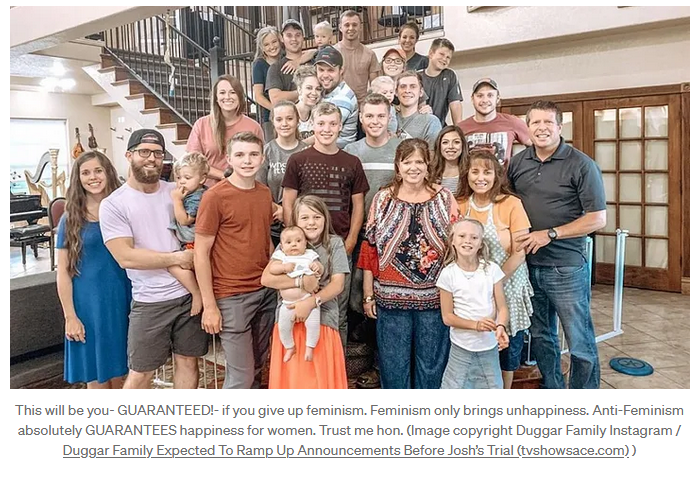
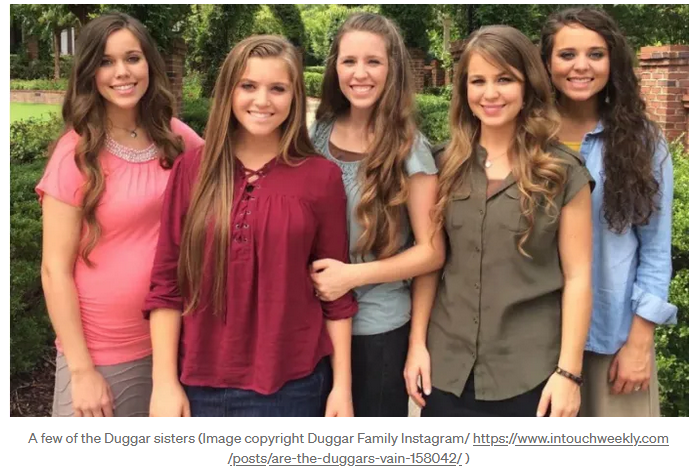



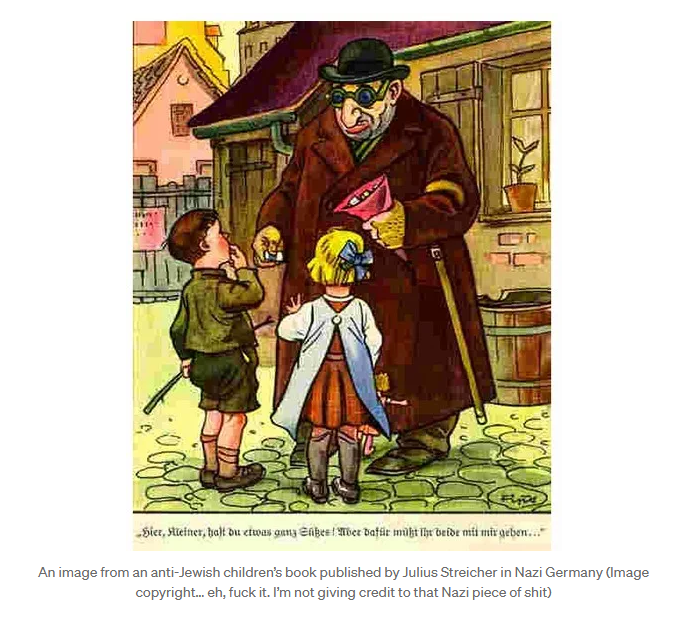

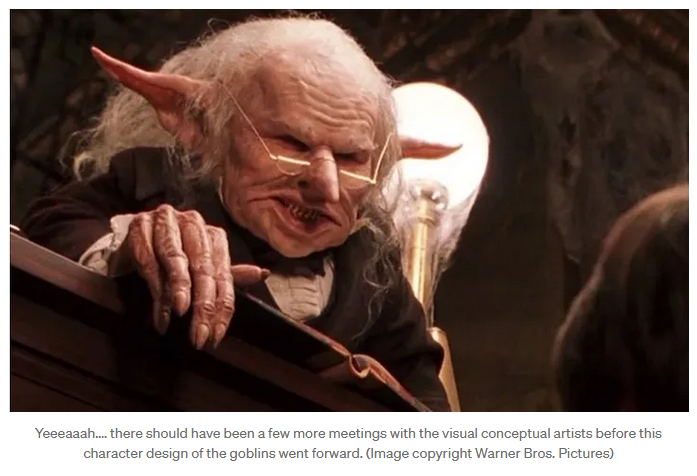



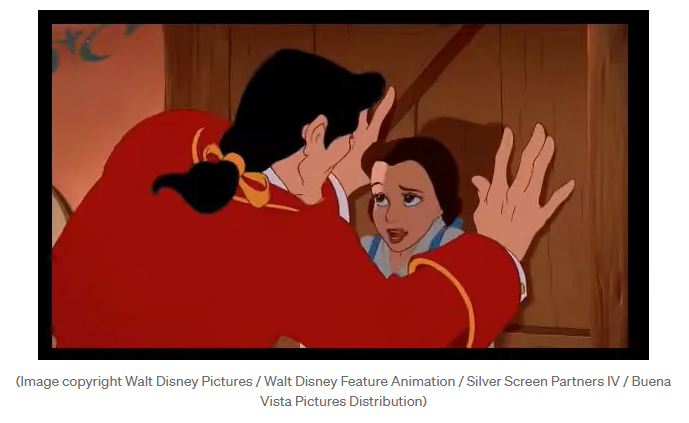






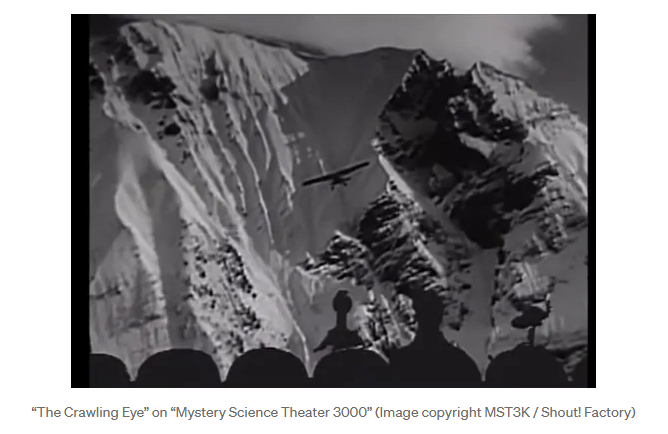





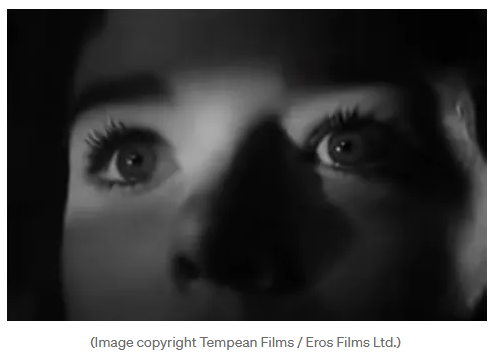




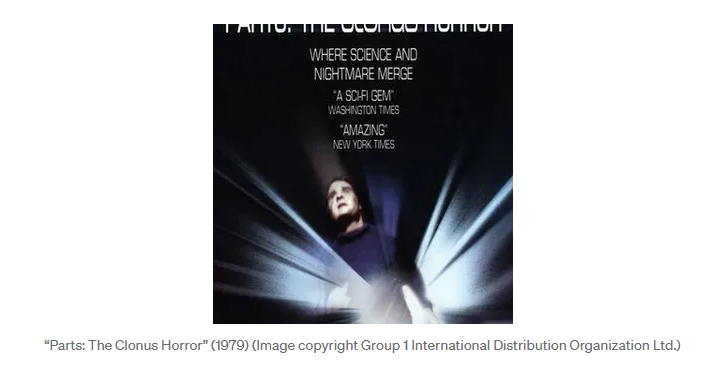


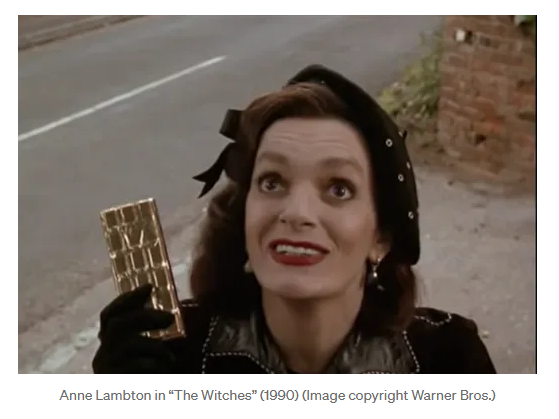










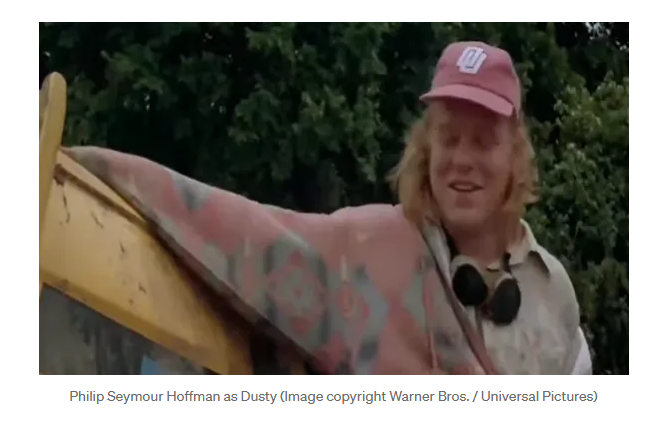






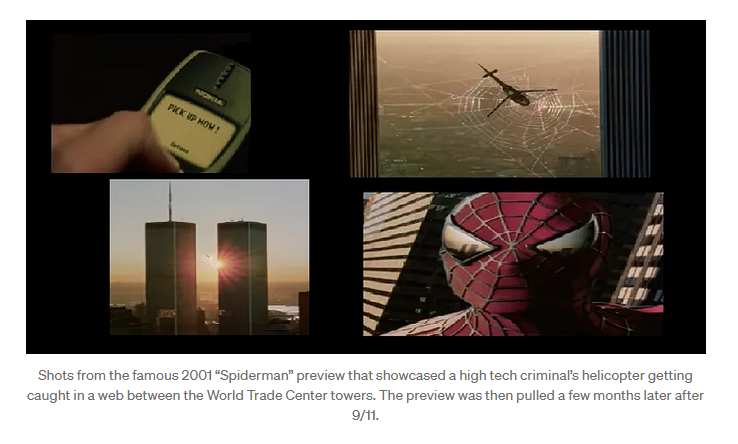


 RSS Feed
RSS Feed
